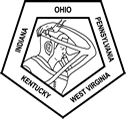<< Back to the abstract archive
Sculpting of the Aesthetic Male Nipple Areola Complex in Female-to-Male Chest Reconstruction: Considerations of Ideal Male Nipple and Techniques Used for Maximal Aesthetic Outcomes
Lynn Orfahli, BM; Aditya Sharma, BS; Brendan Alleyne, MD; Raymond Isakov, MD
Cleveland Clinic/Case Western Reserve University
2020-02-15
Presenter: Lynn Orfahli
Affidavit:
I certify that the material proposed for presentation in this abstract has not been published in any scientific journal or previously presented at a major meeting. I certify that the information contained in this form is accurate
Director Name: Steven Bernard, MD
Author Category: Medical Student
Presentation Category: Clinical
Abstract Category: Breast (Aesthetic and Recon.)
Background: Improper nipple-areola complex (NAC) positioning is a common pitfall of female-to-male (FtM) chest reconstruction, especially in patients not of ideal weight. The goal of this study was to assess NAC positioning using the senior author's technique of aesthetic positioning using anatomical landmarks.
Methods: Postoperative pictures of forty-two FtM chest reconstruction patients were divided into normal and high BMI (<25 and ≥25 kg/m2, respectively) groups. Three judges rated "male-ness" and aesthetic outcome on a subjective ten-point scale based on NAC positioning, contour, scarring, hypopigmentation, etc. Distances between landmarks (sternal-notch-to-nipple, anterior-axillary-fold-to-sternal-notch, anterior-axillary-fold-to-nipple, midclavicular-point-to-nipple, internipple distance, nipple diameter, and areolar width and height) were measured in pixels in GIMP and converted into ratios. Independent t-test, Mann-Whitney U, Chi-squared test, and Spearman correlation were performed.
Results: Although the two BMI groups had significant differences in almost every ratio calculated, there was no significant difference in aesthetic ratings. Spearman correlation showed no correlation between ratings and any of the ratios. Nipple diameter:areolar width was significantly lower in the high BMI group, suggesting a more masculine nipple-areolar relationship. This may be explained by the preference for free-grafted NACs (vs pedicled NACs) in higher-BMI individuals.
Conclusion: Operative management of the NAC depends not only on understanding ideal positioning, sizing, and shaping of the NAC, but on understanding the dynamic response of the body to the chosen surgical technique. With this understanding, masculine, aesthetically pleasing results can consistently be achieved in patients of higher BMI.



